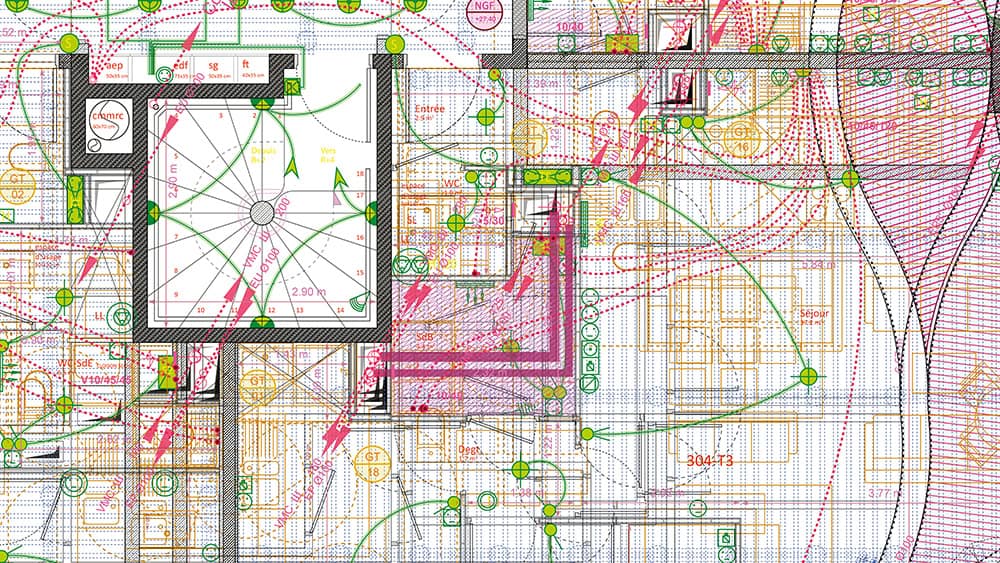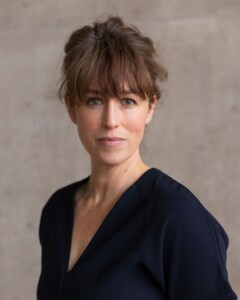Harvard Design Magazine 52: Instruments of Service

Farshid Moussavi Architecture, cropped plan of La Folie Divine, Housing project in Montpellier, France, 2017. Courtesy Farshid Moussavi Architecture.
Event Description
Join Guest Editors Elizabeth Bowie Christoforetti and Jacob Reidel in a discussion about Harvard Design Magazine #52: Instruments of Service. At a moment when “design” has become everything—and hence nothing—Issue 52 examines the hidden mechanics and visible output of design practice in order to track the shifting role of designers in society and to gauge the capacity of designers to effect change in a world of mounting crises.
The issue poses a simple question: What do architects actually make and how is this changing?
Issue 52’s exploration is grounded in architecture. In days gone by, architecture was seen as the “mother art” (Frank Lloyd Wright) and as “the ultimate goal of all creative activity” (Walter Gropius’s introduction to his Bauhaus Manifesto), but over the past century it has lost its purchase on such sweeping and grandiose claims to creative primacy and world-building. At the same time, however, architecture remains a ubiquitous point of reference for a wide range of disciplines, practices, and protagonists that influence the design of the things we use and the environments we inhabit—including fields not only directly related to architecture such as landscape architecture, urban planning, and urban design, but also fashion, industrial design, graphic design, and digital design.
The issue’s title, Instruments of Service, carries a double meaning. As defined in standard American Institute of Architects contracts, “Instruments of Service are representations, in any medium of expression now known or later developed, of the tangible and intangible creative work performed by the Architect and the Architect’s consultants under their respective professional services agreements. Instruments of Service may include, without limitation, studies, surveys, models, sketches, drawings, specifications, and other similar materials.” Instruments of service are the instruction manuals that architects—and other designers—make so that others can make something. They define the architect’s relationships with labor, construction, clients, and society. And these relationships—along with the agency of architectural practice—are changing as a growing number of external pressures force instruments of service to change.
Architects and designers can also be seen as instruments of service to society, responsive to a continually shifting set of values. At a fundamental level, the designer’s job is to imagine and articulate a better future. In a time of crisis and competing value systems—market returns, cultural relevance, environmental response, social equity, automation—the role of the designer in society is ever more important and increasingly accountable to divergent interests that call into question the raison d’être of design practice itself.
In the end, what we make is inextricably tied to why and for whom we make it.
Speakers
 Elizabeth Bowie Christoforetti is assistant professor in practice of architecture at the Harvard Graduate School of Design and the founder and director of Supernormal, a design studio based in Cambridge, MA. Her research, practice, and teaching focus on changing definitions and modes of design practice in the built environment. Her work explores emerging theories, methods, and the technological building blocks that enable design practice to confront the overlapping and conflicting imperatives of our time: the climate crisis, artificial intelligence, and market-driven urbanism.
Elizabeth Bowie Christoforetti is assistant professor in practice of architecture at the Harvard Graduate School of Design and the founder and director of Supernormal, a design studio based in Cambridge, MA. Her research, practice, and teaching focus on changing definitions and modes of design practice in the built environment. Her work explores emerging theories, methods, and the technological building blocks that enable design practice to confront the overlapping and conflicting imperatives of our time: the climate crisis, artificial intelligence, and market-driven urbanism.
 Jacob Reidel examines and advances the purpose, value, and potential of architectural practice. His work—spanning practice, research, publication, and teaching—is grounded in the conviction that while architecture and the people who create physical spaces have existed for millennia, the practice and the profession of architecture are comparatively new and unstable frameworks, subject to reconsideration and redesign. He is assistant professor in practice of architecture at the Harvard Graduate School of Design, a licensed architect in New York where he co-chairs the AIA New York Future of Practice Committee, and is co-founder and editor of CLOG.
Jacob Reidel examines and advances the purpose, value, and potential of architectural practice. His work—spanning practice, research, publication, and teaching—is grounded in the conviction that while architecture and the people who create physical spaces have existed for millennia, the practice and the profession of architecture are comparatively new and unstable frameworks, subject to reconsideration and redesign. He is assistant professor in practice of architecture at the Harvard Graduate School of Design, a licensed architect in New York where he co-chairs the AIA New York Future of Practice Committee, and is co-founder and editor of CLOG.
Harvard University welcomes individuals with disabilities to participate in its programs and activities. If you would like to request accommodations or have questions about the physical access provided, please contact the Public Programs Office at (617) 496-2414 or [email protected] in advance of your participation or visit. Requests for American Sign Language interpreters and/or CART providers should be made at least two weeks in advance. Please note that the University will make every effort to secure services, but that services are subject to availability.
#GSDEVENTS